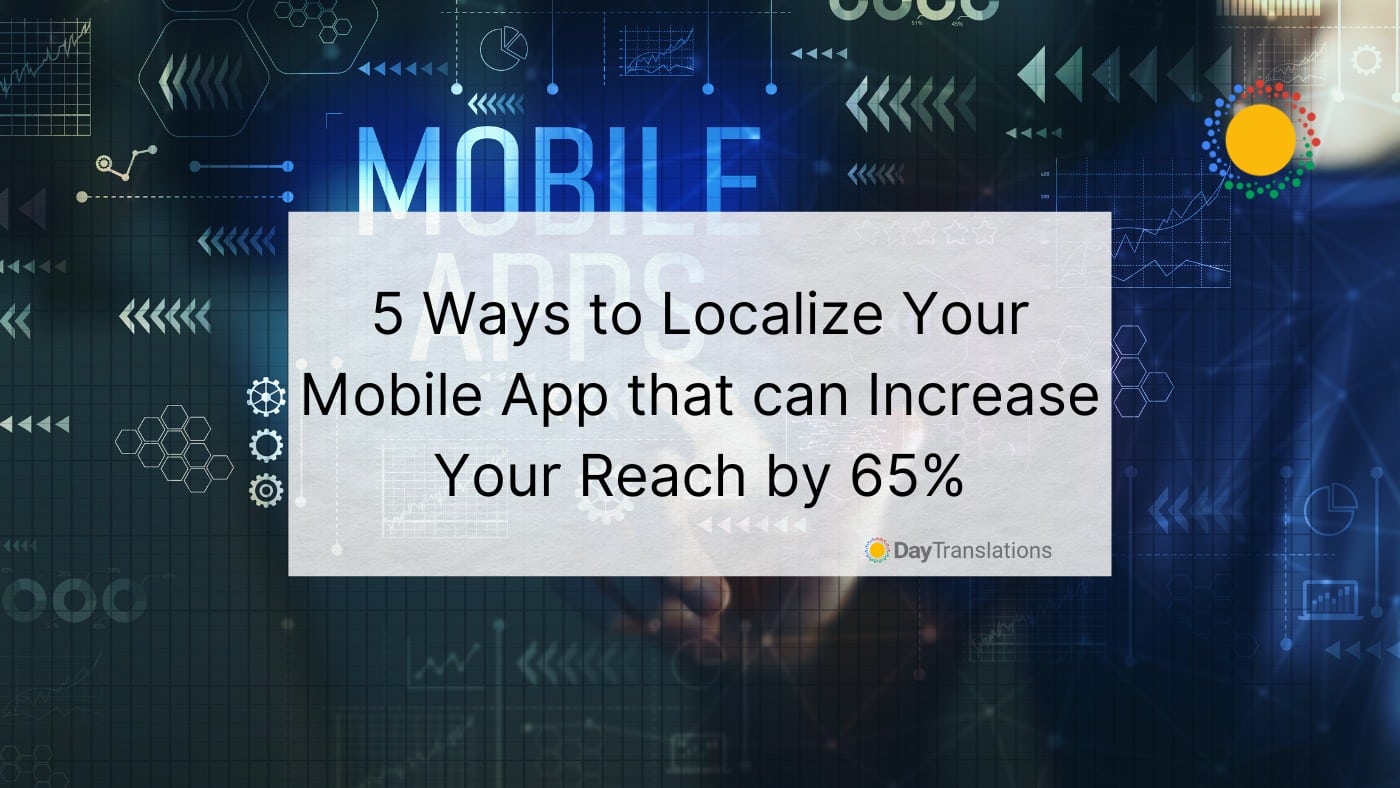With 4.8 billion mobile users worldwide, it pays to make sure that your application appeals to many people. Even the world’s largest app market, China, only accounts for roughly 25% of revenue across iOS and Android.
While mobile applications can be easily distributed throughout the world, your app may be unusable for most people without mobile app localization. And even for people that demonstrate strong English proficiency, 65% prefer content in their native language—even if it’s more inferior.
Ouch…
Imagine losing market share even though your mobile app was better than your competitors!
Don’t worry, though. We’ve got your back. In this article, you’ll learn more about app localization and which aspects you should focus on.
Let’s get started.
Mobile app localization basics
Localization involves tweaking your mobile application so that it can better fit a new region. For example, localizing your mobile app for another language or even variations of a similar language.
That’s not all, though. Localization goes deeper than just language changes. Localization can address imagery, color schemes, cultural nuances, legal issues, and many more aspects that create an authentic experience for your users.
And if users have an authentic experience with your app, they’ll likely keep coming back for more (and hopefully sharing it with their friends.) This engagement is the key to your mobile application’s success in a new market.
Different aspects of your mobile app to localize
To ensure that your mobile application is as authentic as possible, there are several key categories that localizers will focus on. All of these targeted areas must be up to scratch. If you miss one aspect, your users may feel that your app isn’t quite as good as it should be.
Application imagery
The imagery used within your mobile app is crucial for connecting with the end-user. Pictures are powerful ways through which you can communicate emotion and other messaging to your users. That’s why it’s vital to abide by any cultural and religious conventions in the target region.
For example, the Red Cross, a well-known non-profit organization that uses a red cross as its logo, has changed its symbol to adapt to different cultures. In predominantly Muslim countries, their symbol is a red crescent, while in Isreal, they use a red crystal. By modifying their logo, the Red Cross improved their acceptance rate within the new cultures that they were operating in.
Mobile app information
Text-based information is one of the main ways that we communicate through technology. That’s why it’s usually the initial focus for mobile app localizers. Many text aspects need localizing within an app. These include descriptions, help manuals, instructions, and more.
That’s not all, though. You’ll also need to localize any app-related information that’s outside the actual app—for example, your website, marketing materials, iOS or Android store listing, and end-user agreements. Localizers must miss none of these as they can lead to negative experiences for your users.
Addresses, currencies, measurements, and region-specific formatting
These seemingly small elements contribute their fair share towards improving user engagement while they’re active on your app. Tweaking these aspects of your mobile app keeps the user focused on the experience, rather than getting annoyed about having to jump in and out of the app to convert measurements or getting confused by prices.
While your mobile app may not need localizing for every piece of information in the heading, it’s essential to localize every instance that applies.
Legalities
Legal requirements and laws differ in many countries around the world. They can even vary between regions in the same country or between different levels of government! So, just like you researched the necessary legal information for your original area, you’d need to do the same for any regions that you’d like to expand into.
Some legal requirements include tax obligations, warranties, return policies, and age restrictions.
App store optimization
Like search engine optimization (SEO), you’ll need to give your app the best chance of being found within the store that you list it. You’ll need to research the keywords that will have the most impact on your listing based on the region you’re targeting. App store optimization or ASO will really help with improving app store visibility, which is important if you want the right people to find your app.
Give your business a competitive advantage with mobile app localization
With all the different factors addressed in mobile app localization, it can be tricky to get it right the first time. That’s why it’s always a good idea to enlist the help of localization professionals.
Here at Day Translations, we’ll leverage our mobile app localization services experience to ensure the job’s completed to perfection so you can wow your new audience.
Have a question about localizing your mobile application?
Give us a call on 1-800-969-6853 or get in touch through live chat, and we’ll even throw in a no-strings-attached mobile app localization quote!












Sorry, the comment form is closed at this time.